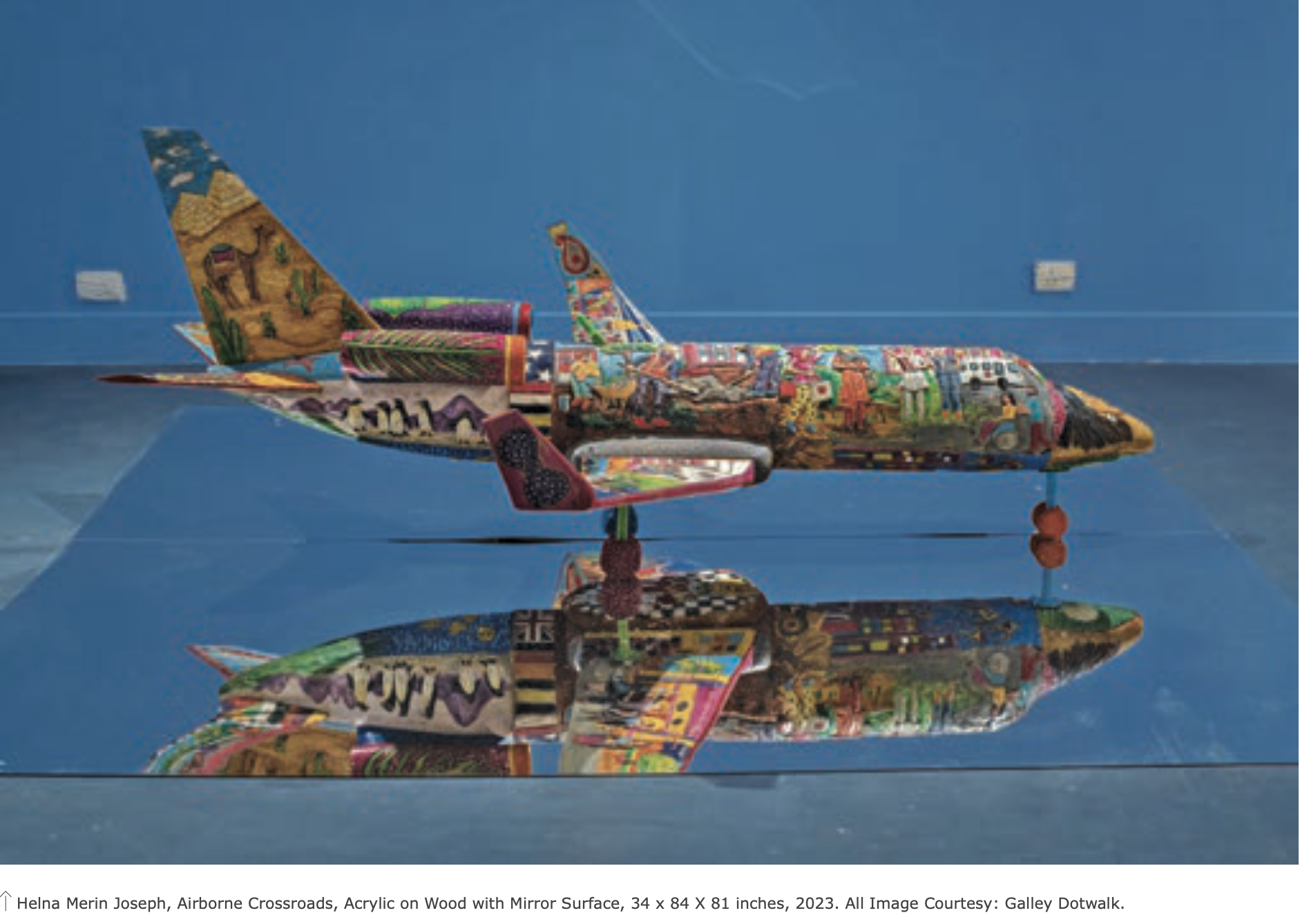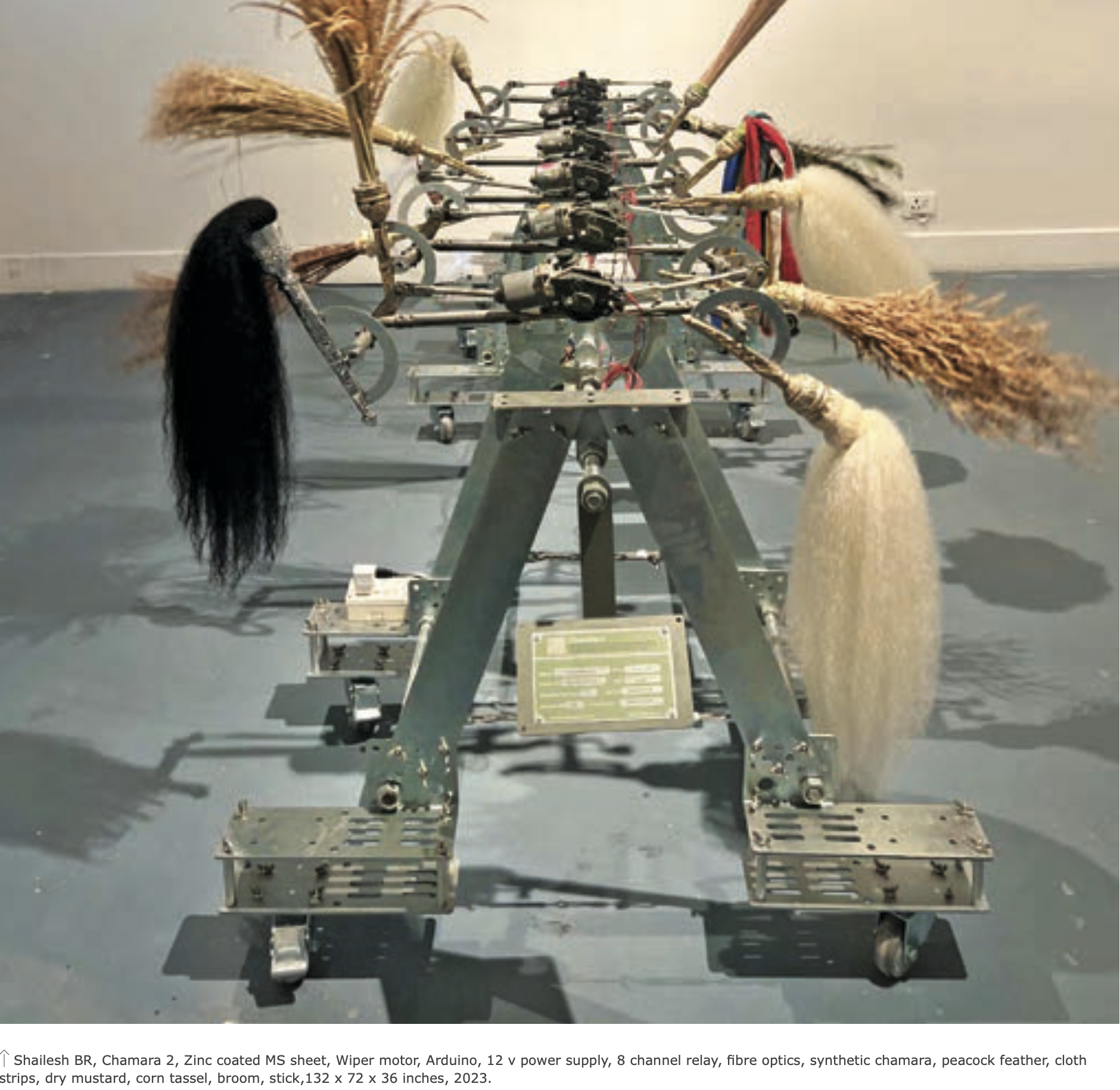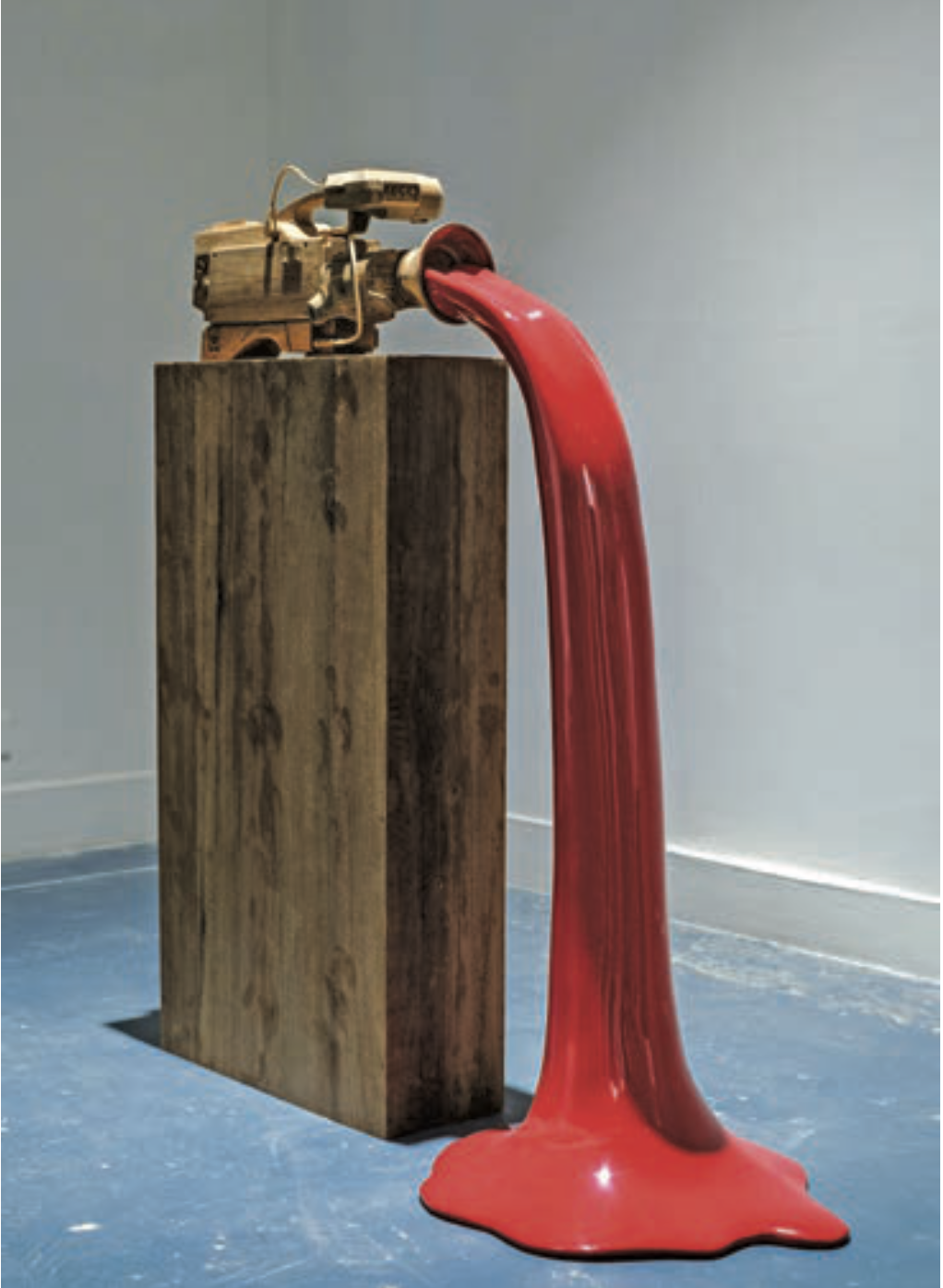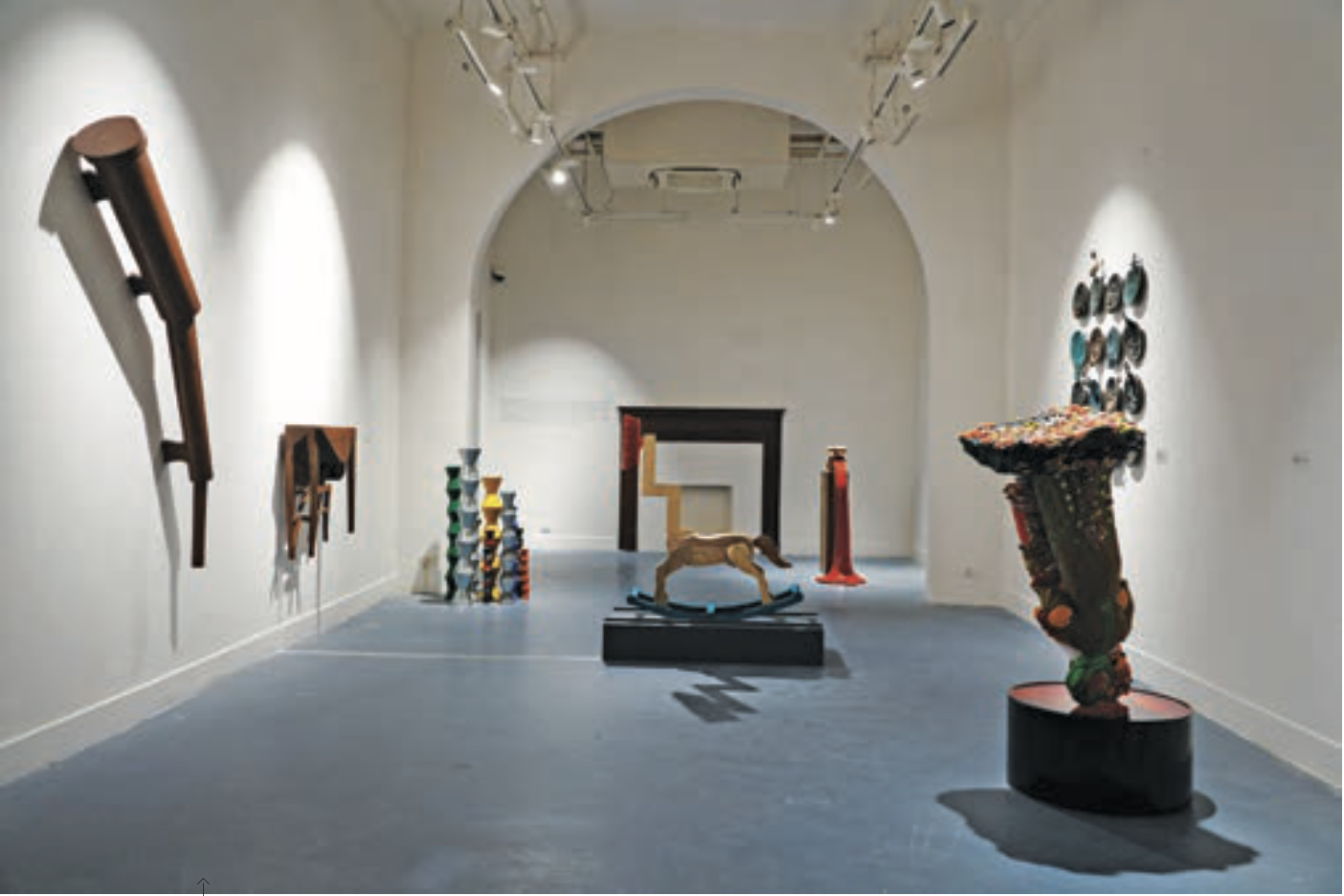
Humans and objects share a very close and intimate relationship. Humans identify objects and establish a correlation which further is associated with time, while being recognised by human memory. Objects become a source to initiate pre-established relations of humans with time. Once identified, they add evidential value to time and space. The notion of time and space becomes an important part of the curatorial intervention in the exhibition Things are Vanishing Before Us. It is through this that the viewer constructs and establishes the correlation between past and the present, and what posterity holds. The centrifugal force of the art work opens the room for a visitor to revisit the relationship with the past in the present, and how it serves as an opportune moment to shape the future. This, in the exhibition is achieved with the viewer’s familiarity with objects.
The exhibition in the light of works—installations, sculptures and paintings—attempts to establish the importance of physical items; here, in the form of objects. The artworks on the display stand as a repository of memoryscape and initiate a pre-existing relationship between the object and the visitors.
As per the Object Relation Theory elobrated by Melanie Klein, our relationship is strongly rooted with our attachment with individuals, vis-a-vis objects. These objects symbolically refer to people and become physical items that represent our association with objects. The theory puts emphasis on how early relationships with objects widely affect and influence our later relationships; those built in the course of adult life. These objects are further characterised into Internal Objects— an individual who we emotionally invest in—and External objects—those through which we hold psychological and emotional impressions of an individual.
The exhibition Things are Vanishing Before Us curated by Premjish Achari for Galley Dotwalk attempts to comment on the importance of objects: both the physical items and their relationship with humans. The exhibition through the artistic exploration attempts to shed light on how the tangible relation and association of physical items has influenced artists participating in the show. The exhibition is a catalyst to understand and acknowledge human relationship with objects, which today has widely been compromised by technological advancements.
Shailesh BR’s multimedia installation, Chamara 2 underlines the visual value to the curatorial thought. The 8 channel relay with peacock feathers, dry mustard, boom and stick creates a tension between the Brahmanical order of Indian social system through the machinery and manual devices of sanitation. Another work of the same artist, 00:00 pm, a luminating neo light on the wall, invites and attracts the viewers to ponder upon the clock and recollect their thoughts. The timer, stuck on 00:00, when juxtaposed with the surrounding objects suggests an aura of the melancholy of life.

The exhibition has multiple layers of thought and curatorial approach and focusses on how humans have distanced themselves from the sensory aspects of nature and have forced themselves to interact with digital screens more than needed. The resulting disassociation with nature and objects, has eventually compromised the human ability to think and comprehend the surroundings. Things are Vanishing Before Us addresses how humans have reduced their ability to interact with nature and have driven more towards the two- dimensional world. Sudarshan Shetty’s installation work untitled directly brings to the attention of viewers the sensitive and a very critical argument of sensationalised content generation. The work attests to the dichotomy of human experience and data consumption through multimedia. It acknowledges how multimedia can create, alter and translate information which is fed to the public. The red acrylic which flows out from the camera sheds light on multimedia as a tool to promote or propagate information which is consumed by citizens.
Wooden Album by Suneesh and Objects of vanishing life by Unnikrishnan C attempt to put in place the relationship of the objects that were once an important tool and have therefore vanished from urban spaces. These objects are designed to trigger memory and association. The bronze sculptures by KS Radhakrishnan in the exhibition further provide a take on the object which holds evidential and emotional value to individuals and how they have been overpowered and neglected by our approach.

More importantly, Things are Vanishing Before Us comments on how humans most recently have alienated themselves from physical reality and have been consuming data to shape their ideas and thoughts rather than interacting with the physical world. Humans have centred themselves around screens, continuously consuming data, therefore occupying a dystopian world—where whatever is seen and consumed through the screen is hyperreal content systematically targeted and strategized for the audience.
The exhibition urges us to think and evaluate how the human tendency to understand and perceive reality has been widely compromised and how the logical algorithm has taken the place of emotional quotient in humans. As we take the exit, there is a realisation of how objects hold value and how our relationship and interaction with them is reduced. However, deeming the scale of the exhibition, we are overwhelmed with the dominant presence of the works. It takes time to realise and construct a thought about the approach of the exhibition. However, once that realisation is there, wedeconstruct the first visual impression and understand the importance and need of the exhibition.

Things are Vanishing Before Us, curated by Premjish Achari, CCA Building, Bikaner House, New Delhi, September 16 – 24, 2023.














